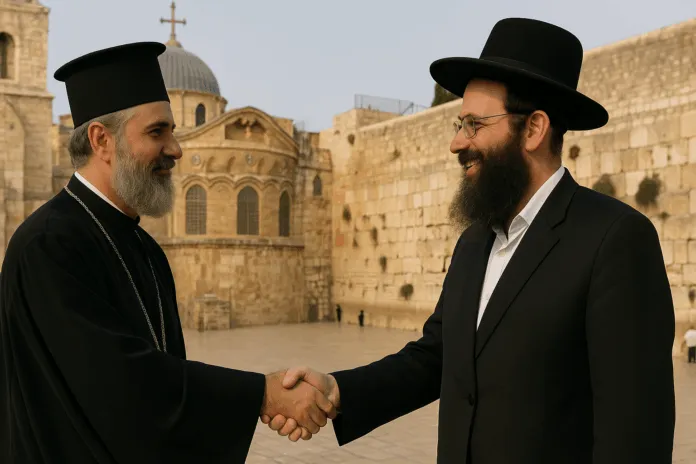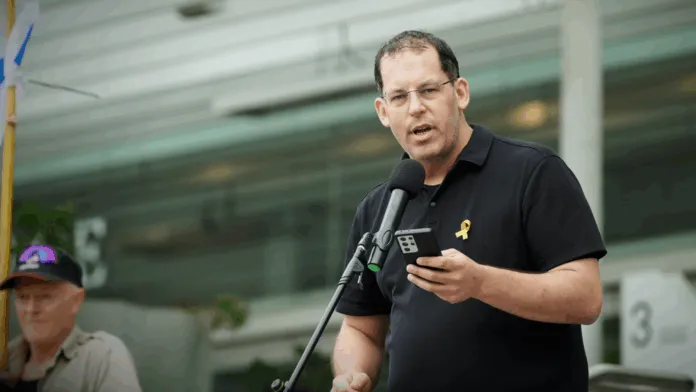Table of Contents
What’s happened: The IDF has announced that the four Hamas battalions in Rafah have been operationally dismantled.
- Over the last few months more than 2,000 terrorists have been killed. The IDF have destroyed approximately 13 km of underground tunnel, constituting 80 per cent of the smuggling routes underneath the Philadelphi Corridor on the Egyptian border.
- Combat engineers are expected to continue their work to find and destroy any remaining tunnels.
- In the north, Hezbollah have continued to fires rockets into northern Israel. Last night around 20 rockets were fired toward Safed. No injuries have been reported, but the fire service worked through the night extinguishing flames.
- Sirens were again sounded across areas in northern Israel in close proximity to the border with Lebanon, as Israeli Air Force jets carried out counter strikes on Hezbollah military sites southern Lebanon.
- According to Syrian opposition sources, more details have emerged of the alleged Israeli strike on the Iranian Islamic Revolutionary Guard Corps (IRGC) facility in the Masyaf area in Syria earlier this week.
- According to their report the attack consisted of three phases:
- Israeli fighter jets struck all the approach roads preventing access to the site. According to eye witnesses this also included striking vehicles in the vicinity that tried to reach the facility.
- Israeli commandos dropped from their helicopter and entered the facility which Israel suspected was used by the IRGC to develop advanced weapons to Hezbollah. According to the report, the IDF commandos were on the ground for an hour and collected documents and other intelligence material.
- Once the troops left, the site was destroyed.
- There were further suggestions that Iranian personnel were also captured, but the Iranians have denied this. The Syrian government has denied the attack took place and Israeli officials have remained silent.
- Israel has targeted Iranian assets in Syria hundreds of times over the last few years, but an operation of this type, involving Israeli troops on the ground, if true, would be represent a significant and unique accomplishment.
Context: The completion of operations in Rafah seems to mark the end of Phase two of the war, with the conquering of the command and control capabilities of the Hamas battalions that operated in Gaza a year ago.
- Over the last few months the army had already begun transitioning to Phase three, which is characterised by smaller targeted counter-insurgency operations (across the Strip) while forces hold the two key corridors – Netzarim that bisects the strip in the centre and Philadelphi in the south.
- The ground operation in Rafah lasted around four months. It was considered extremely sensitive and caused friction with Israel’s allies over the concern for the civilian population, which had swelled to 1.4 million on due to Gazans fleeing from other areas of Gaza.
- However ahead of the operation the IDF cleared a humanitarian corridor north to Khan Yunis and the al-Mawasi safe zone.
- Israel had always cited the importance of taking over Rafah as it functioned as the main smuggling route for Hamas over many years and significantly enhanced their ability to import weapons and explosives into the Strip, largely from Iran.
- Rafah was also thought to be the hiding place of Hamas’s remaining leadership including Yahya Sinwar. Despite the IDF successfully targeting numerous senior Hamas figures, Sinwar and his brother Mohammad remain at large.
- The third motivation of the Rafah operation was to free hostages. Here there was limited success, with two successful operations that saw the release of four hostages alive.
- Two weeks ago the IDF recovered the bodies of six hostages, who were tragically assassinated days earlier, having survived in horrific conditions in a dark, humid tunnel, unable to stand up straight for over 10 months.
- The death of the six hostages and the exposure of the conditions in which they were held has led to further intensify the public protests to reach a deal for the release of the remaining 101 hostages.
Looking ahead: Israeli media reports are suggesting that IDF Chief of Staff Halevi is making preparations to resign at the end of the year.
- The end of Rafah operation adds further speculation as to whether the IDF will now pivot attention into a more offensive posture in the north.
- Around 80,000 residents of the north remain internally displaced, with growing pressure on the government to reach a solution either diplomatic or military to allow them to return home in peace and security
This article was originally published by the Britain Israel Communications and Research Centre.









